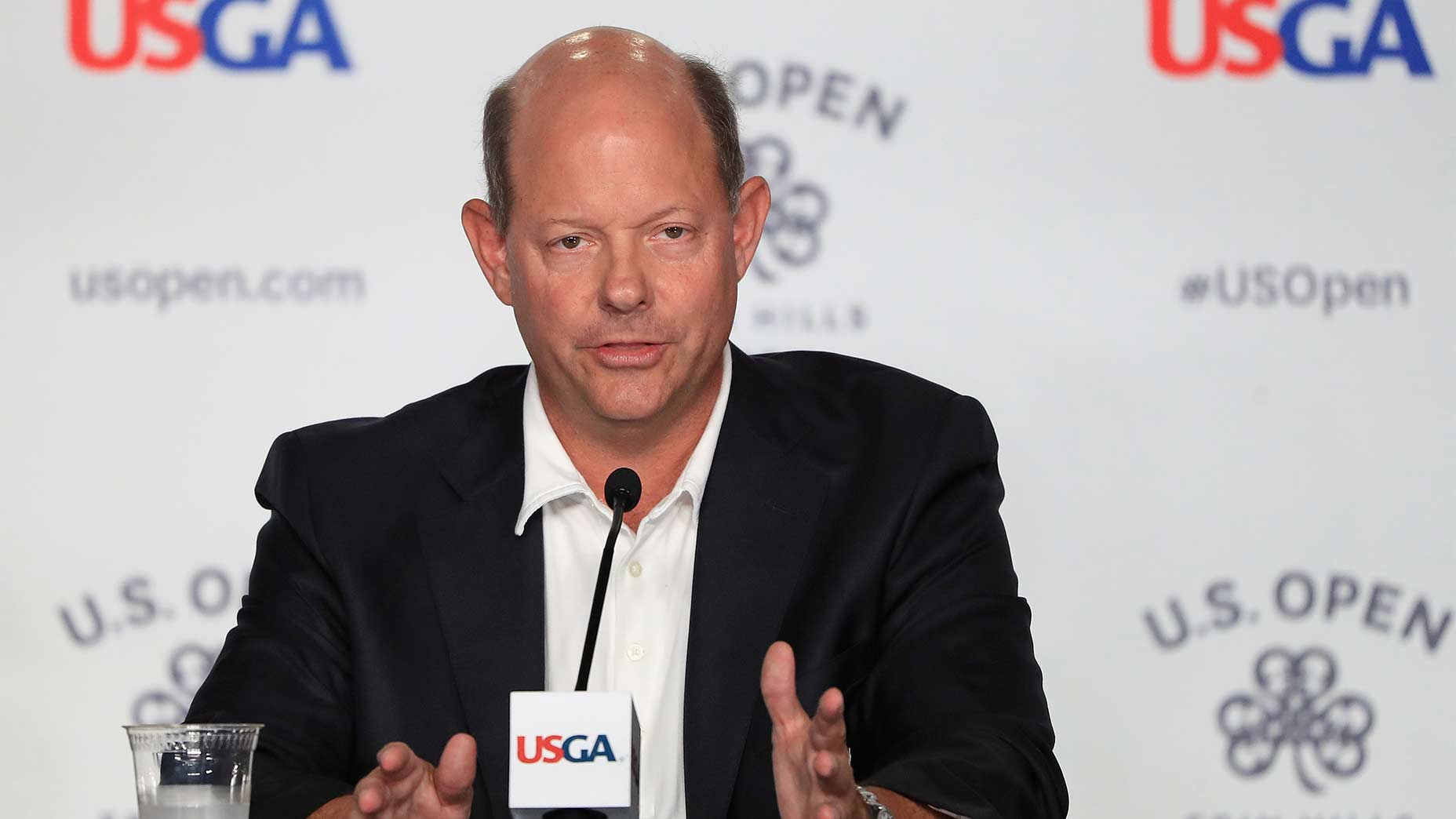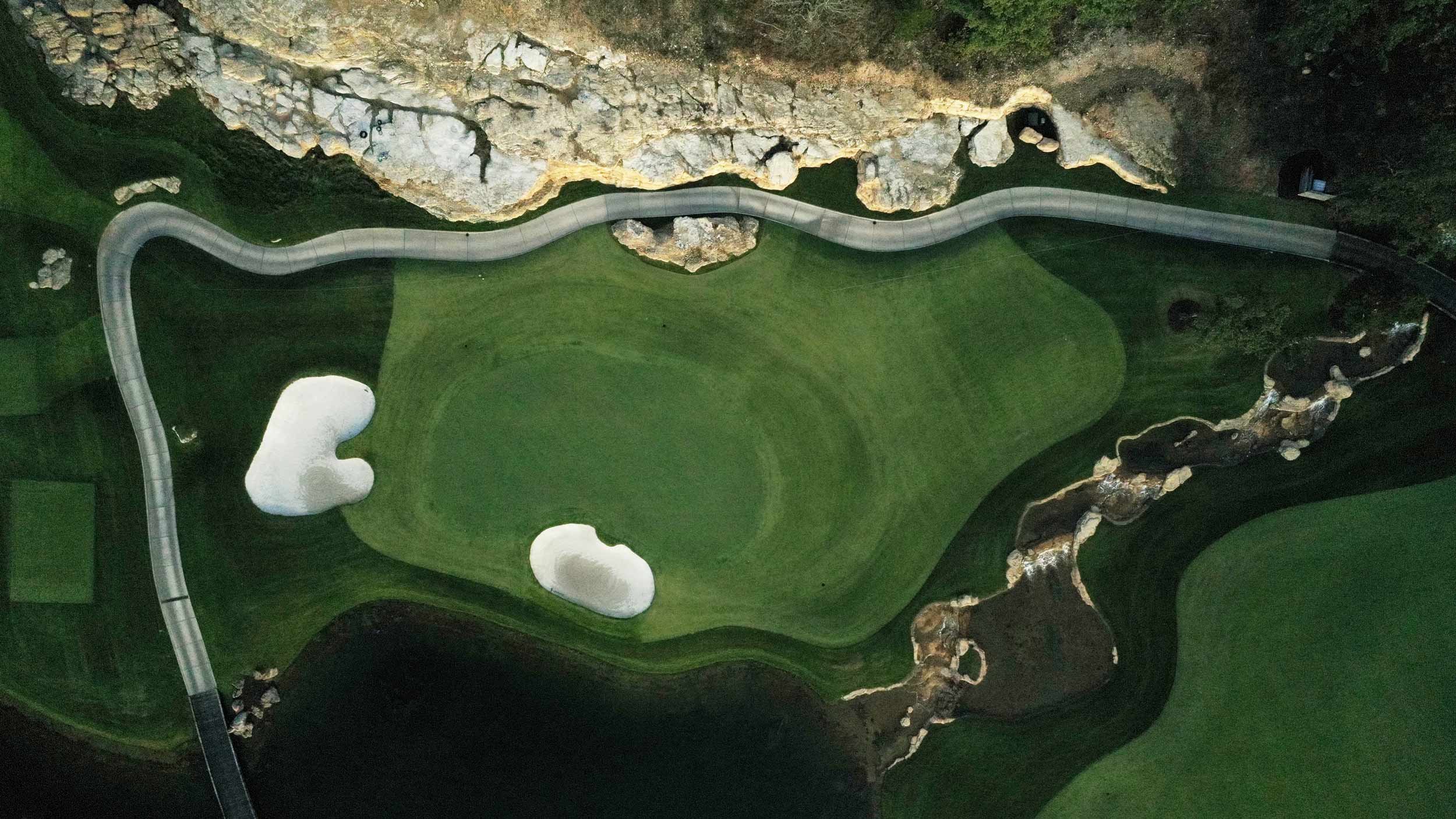Check in every week for the unfiltered opinions of our writers and editors as they break down the hottest topics in the sport, and join the conversation by tweeting us @golf_com. This week, we discuss Mike Davis’ legacy, his possible replacement, Tiger Woods’ designs and more.
1. Mike Davis announced he is stepping down as USGA CEO to pursue a career in course design; the association expects to have a successor in place before next year’s U.S. Open. During Davis’ nine-year reign, the USGA experimented with new U.S. Open sites (while also making Open setups more playable); inked a massive TV deal with Fox (before transitioning back to NBC); and, along with the R&A, launched the Distance Insights Project to study the effects of distance gains on the game. What do you think will most define Davis’ legacy?
USGA chief Mike Davis stepping down to pursue lifelong passion, successor unknownBy: Josh Sens
Alan Shipnuck, senior writer (@alanshipnuck): Davis loves the game as much as anybody I’ve met, and that’s a pretty good list of some key accomplishments. It’s a shame various controversies marred the Opens he presided over (Chambers Bay’s greens, the DJ ruling at Oakmont, the Shinnecock pin placements). And the hard truth is that the USGA has been asleep at the wheel as distance gains have overwhelmed the professional game. Davis is the purest of purists, and it’s unfortunate the USGA has let so many great old courses be rendered obsolete.
Dylan Dethier, senior writer (@dylan_dethier): Everything Shippy said is spot on here. I’d say the best part of Davis’ reign was pushing some boundaries when it came to more modern golf courses, forward-thinking broadcasts and generally re-establishing an aura around golf’s national championships.
Michael Bamberger, senior writer: The drivable par-4. Water conservation. The importance of golf’s traditional values of etiquette, sportsmanship and fidelity to the rules.
Nick Piastowski, senior editor (@nickpia): The start of the distance report. As Jack has mentioned, the can has been kicked down the street on this for around 40 years. What comes next could shape the future of the pro game and quite possibly the amateur game. And it will have been started under Davis’ watch.
2. Congrats, the USGA has tapped you to recruit Davis’ replacement! Who’s your first call to, and why?
Shipnuck: I’m pulling a Dick Cheney and naming myself. The USGA has never been very media-savvy so putting a reporter in charge would be a needed sea change. It’s an insular organization — time for some fresh blood!
Dethier: Provided Shippy has already hired himself to shake some branches, I’ll follow up with a call to a stylist — navy blazers are a classic look, but let’s get at least some of the good folks at the USGA in something a little more modern! This is golf, after all. It’s supposed to be fun!
Bamberger: Rory McIlroy. He’d be an excellent CEO of the USGA.
Piastowski: This is not meant to start a political debate so don’t @me, but — Barack Obama. He’s played the political game. He provides name recognition. He’s a golfer. Why not?
3. Payne’s Valley, Tiger Woods’ first publicly accessible course design, debuted last week at Big Cedar Lodge in Missouri. The course unspools across the Ozark Mountains and by all accounts is a fair, fun test. Woods now has nine courses (either completed or in the works) in his portfolio, including a mix of traditional designs, short courses and one restoration, at Jackson Park GC, in Chicago. How would you assess his body of work to this point? And where would you like to see him take his design business next?
8 things I learned watching Tiger Woods play his new Payne’s Valley course (then playing it myself)
Shipnuck: The look of the courses is very Fazio-eque, which is disappointing because we already have tons of Fazio courses. Tiger has the juice to convince the money guys that we need bold, fresh-thinking and radical new designs, but at heart, he’s just a conservative Orange County dude. Too bad. All that said, Bluejack and Payne’s look like a lot of fun, and I look forward to playing both. I would love if Tiger thought more about his legacy and less about his bank account. Why did he let himself get sucked into building courses at exclusive developments in the desert of Dubai and the cliffs of Mexico? He grew up playing ratty public courses — how cool would it be if he devoted the next 40 years to building a bunch of awesome, affordable muni courses?
Dethier: Seconded! By far his most exciting design is a complete overhaul of the Jackson Park course by Lake Michigan on the south side of Chicago. There are still challenges facing the project, but it’s the sort of thing that could make a massive impact on an underserved community and enrich the entire golf world in the process. The other stuff is fun, and some of it looks great — Bluejack looks particularly tantalizing, and Payne’s looks like it would be a blast to play, over-the-top or not. But yes, seeing Tiger take a holistic approach focusing on high impact would be awesome to see.
Bamberger: Haven’t played one. My preference is for scruffy. I think Tiger likes spiffy, from what I’ve seen.
Piastowski: I also haven’t played any of them (though I’d like to!), and that leads right into my answer for the second part of the question and follows much of what my colleagues have said above. There is no golfer with a bigger name. If he were to continue to attach his name to accessible public courses, think of the growth. On a side note, I also like his Popstroke concept. It’s Topgolf, but for putting. That’s smart business.
4. Padraig Harrington said last week that when he was coming up the ranks, too much speed in one’s swing “was considered a fault that needed to be coached out of you.” But now, with the success of the modern bashers, most notably U.S. Open champion Bryson DeChambeau, speed, Harrington says, will be “coached into players.” When rating the essential skills for a modern Tour pro, would you say speed/distance has eclipsed every other part of the game?
Dethier: Yes. One hundred percent. That’s not to say that the other stuff isn’t important — Bryson DeChambeau has made serious, career-changing gains with his putter, for instance, and just had an elite week with his irons at Winged Foot — but if you start with a foundation of speed, the rest of it comes a whole lot more easily.
Shipnuck: I don’t know, precision still pays the bills – it was only a month ago Morikawa won the PGA! And smarts and great putting have made a good career for plenty of Kevin Streelmans. But, yes, speed/distance is a crucial component and will only become more so.
Bamberger: You can learn precision. Hard to learn speed. They say speed kills. In golf, now, that’s not true. Agree.
Piastowski: Yes. Put yourself in constant position to be successful, and your odds to win increase dramatically. The game is just easier when you’re closer. Speed helps that.
5. Speaking of Harrington, the Irishman employed the rules in eye-catching fashion during the first round of the Irish Open, picking up a massive fallen tree branch — yep, a loose impediment! — that was impeding his swing. Harrington was within his rights, but is there such a thing as taking *too* much advantage of the rules?
Dethier: If there is, it wasn’t the case here. Move those big ol’ impediments! There’s probably some line players shouldn’t cross — Rory McIlroy refused to take a better lie earlier this year, you’ll recall, fearing he’d violate the spirit of the rules — but golf’s rules can be so confusing and restrictive that when you find one of them can actually help you, take full advantage.
Padraig Harrington employs one of wildest use of rules you’ll ever seeBy: Zephyr Melton
Shipnuck: I don’t know, man — that rule is designed for twigs and pebbles. Maybe there should be a weight limit of two pounds, and all players have to carry around their own scale.
Bamberger: If you can pick it up yourself, fine. If you need a dozen grown men to move a boulder, you’re violating the spirit of the rules. The spirit matters.
Piastowski: I agree with Michael here. We’d all like to think the rulemakers thought of every angle, but the player should step in if it gets a bit weird — golf’s an honorable game. Though I’d totally like to see a dozen men lifting a boulder.
6. Sunday would have been the final day of the Ryder Cup at Whistling Straits, which was moved to a year from now due to the coronavirus pandemic. What did you most miss?
8 reasons why Whistling Straits will be a phenomenal Ryder Cup hostBy: Sean Zak
Shipnuck: Being right. I have no doubt the young, talented Americans who have been dominating the golf world were going to win to touch off a decade of dominance. Now, who knows how much momentum will be lost over the next year. Alas, Europe even wins the pandemics.
Dethier: The crowds. The frenzied Midwestern crowds waking up on a crisp Wisconsin morning, getting out in some hideous star-spangled garb and rooting on their beloved Yanks in a too-close Ryder Cup on a super-fun golf course. Oh, and figuring out if Tiger Woods should be on the team — that would have been a blast of a debate too, no doubt.
Bamberger: The parade of self-importance, pre, post and during.
Piastowski: The fans. They made the right call to not go on without them. It’s the event that needs a crowd the most. The one event where you can cheer for your team — and get after the other one.














